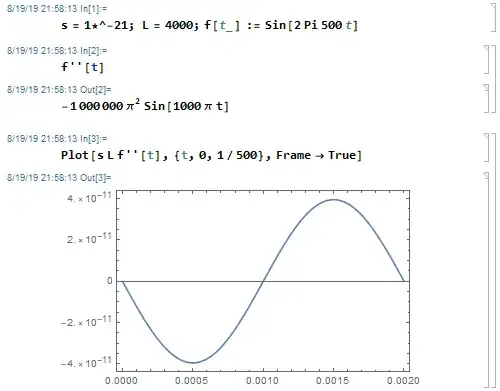Could a powerful gravitational wave tear apart and object?
If the force is strong enough the answer is yes, although the waves we have received until now are many orders of magnitude too small for that. For example, let's take GW150914, which had a received strain of $s=10^{-21} \rm m/m$ and a frequency of $500\rm Hz$, so the sine-function for the wave is
$f=\sin(2\pi \cdot 500 t)$
That gives you a relative acceleration of
$a=s·L·\ddot{f}$
from one end to the other, where $L$ is the length of the stretched object, and $\ddot{f}={\rm d}^2f/{\rm d}t^2$. At LIGO, the length was $L=4000\rm m$, so the maximal acceleration from one end to the other was around $4 \cdot 10^{-11} \rm N/kg$, which is not enough to tear LIGO's arm apart, but if you increase either the strain, the frequency or the arm length, the acceleration and therefore the force would get stronger, and if strong enough even tear apart the object:

x: time (sec), y: relative acceleration, specific force (m/sec², N/kg)
Either the object is rigid and strong enough to withstand the wave, then its molecules have to accelerate relative to the changing space in order to keep the object from stretching and squeezing, in which case it will feel a force because the electromagnetic forces between the molecules will act against the wave to counteract the deformation.
If the objects are loose and not bound to each other, they will increase and decrease their distance to each other in order to follow their force-free geodesics. If they can not do that because they are bound, they are no longer force-free; in that case it depends if the binding forces between the molecules are stronger or weaker that the required force to cancel out the deformation from the wave.
If you concentrate the masses on the two ends and connect them with a thin string the conversion from acceleration to force and the determination if the string will tear apart is simple, and if you have your mass spread out over the whole distance like on a rigid stick you have to integrate over the distance.
That is also the reason why even objects inside a wave which are not torn apart are at least heated up due to the internal exchange of forces and friction, see Feynman's sticky bead argument. Since the counteraction causes destructive wave interference (if bound objects stay at rest to each other while the space between them oscillates, they oscillate relative to the changing space), the wave is also getting weaker by the amount of energy produced in this process.

